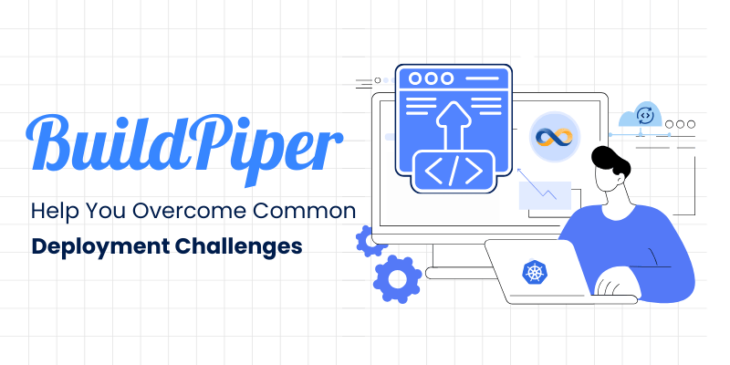
Deploying microservices can be tough. It’s like solving a complicated puzzle where every piece has to fit perfectly.
You have to manage complex dependencies, keep environments consistent, speed up slow deployments, plan for rollbacks, ensure everything works smoothly, and monitor everything closely.
In this blog post, we will help you understand these challenges and show you how BuildPiper can make it easier for you.
6 Common Deployment Challenges Solved by BuildPiper
1. Complex Dependency Management
Managing intricate dependencies between microservices can be overwhelming, leading to deployment failures. Microservices often have interdependent relationships that need to be carefully managed to ensure smooth operations. Without proper tools and processes in place, these dependencies can become a major source of deployment issues, causing delays and potential system outages.
Solution: BuildPiper’s advanced dependency mapping and orchestration capabilities provide a clear overview of service relationships, ensuring smooth deployments. By visualizing dependencies, BuildPiper allows teams to manage and deploy microservices with confidence, minimizing the risk of failures due to overlooked dependencies.
2. Environment Inconsistencies
Differences in development, testing, and production environments can cause deployment issues. Inconsistent environments can lead to unexpected behaviors and failures when code that works in one environment doesn’t work in another. This can significantly slow down the deployment process and increase the likelihood of bugs reaching production.
Solution: BuildPiper’s environment management features help you create consistent environments across different stages, reducing errors and ensuring reliable deployments. By standardizing environments, BuildPiper ensures that what works in development and testing will also work in production, minimizing deployment risks and enhancing overall reliability.
3. Slow Deployment Cycles
Frequent and lengthy deployments can hinder development velocity and time-to-market. The complexity of deploying multiple microservices can lead to slow and cumbersome deployment processes, delaying the release of new features and updates. This can impact a company’s ability to respond quickly to market demands and stay competitive.
Solution: BuildPiper’s parallel processing and intelligent scheduling optimize deployment pipelines, significantly reducing deployment time. By automating and streamlining deployment processes, BuildPiper helps teams deploy faster and more efficiently, allowing them to focus on development and innovation rather than deployment logistics.
4. Rollback Challenges
Implementing effective rollback strategies for microservices can be complex in case of deployment failures. When a deployment fails, it’s crucial to quickly revert to a previous stable state to minimize downtime and impact on users. However, rolling back microservices deployments can be challenging due to their distributed nature and dependencies.
Solution: BuildPiper’s built-in rollback mechanisms simplify the process, allowing you to quickly revert to previous versions if necessary. By providing automated rollback capabilities, BuildPiper ensures that teams can recover from deployment failures swiftly and with minimal disruption to services.
5. Ensuring Deployment Reliability
Maintaining high deployment reliability while managing multiple microservices can be challenging. Ensuring that deployments are reliable and free from errors is critical for maintaining the stability and performance of applications. However, the distributed nature of microservices can make it difficult to achieve consistent deployment reliability.
Solution: BuildPiper’s robust pipeline automation and testing integration help identify and address potential issues before they impact production. By integrating thorough testing and automated checks into the deployment pipeline, BuildPiper ensures that deployments are reliable and that any issues are caught and resolved early in the process.
6. Monitoring and Troubleshooting
Tracking and troubleshooting issues across numerous microservices can be time-consuming. Identifying the root cause of problems in a microservices architecture can be complex due to the distributed nature of the system. Without effective monitoring and logging, issues can go undetected or take a long time to diagnose and resolve.
Solution: BuildPiper’s comprehensive monitoring and logging capabilities provide visibility into deployment processes, aiding in faster issue resolution. By offering detailed insights into the deployment process and the performance of individual microservices, BuildPiper helps teams quickly identify and troubleshoot issues, ensuring smoother and more efficient operations.
Wrapping Up
With the right tools and strategies, you can overcome these common deployment challenges. BuildPiper addresses these issues by offering tools for dependency mapping, environment consistency, and efficient deployment pipelines. It also provides robust rollback mechanisms and comprehensive monitoring capabilities. By integrating these solutions into your workflow, you can reduce errors, speed up deployments, and maintain high reliability.
Schedule a 1: 1 BuildPiper Demo – Take me There!




